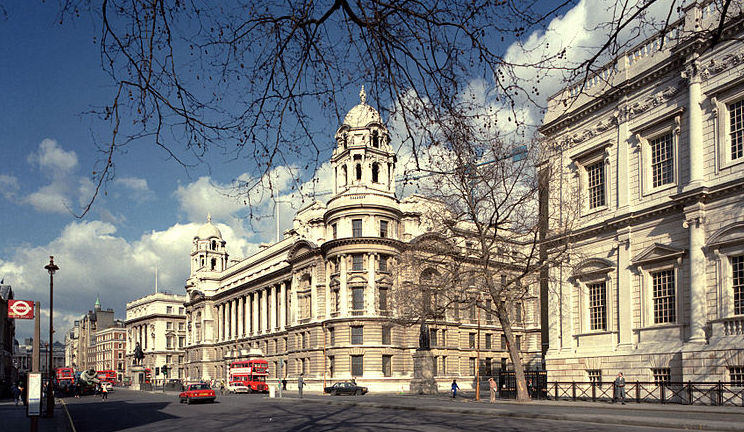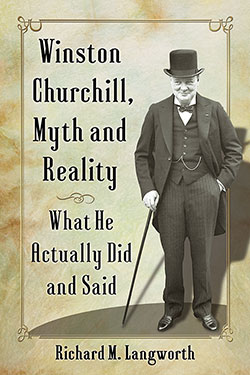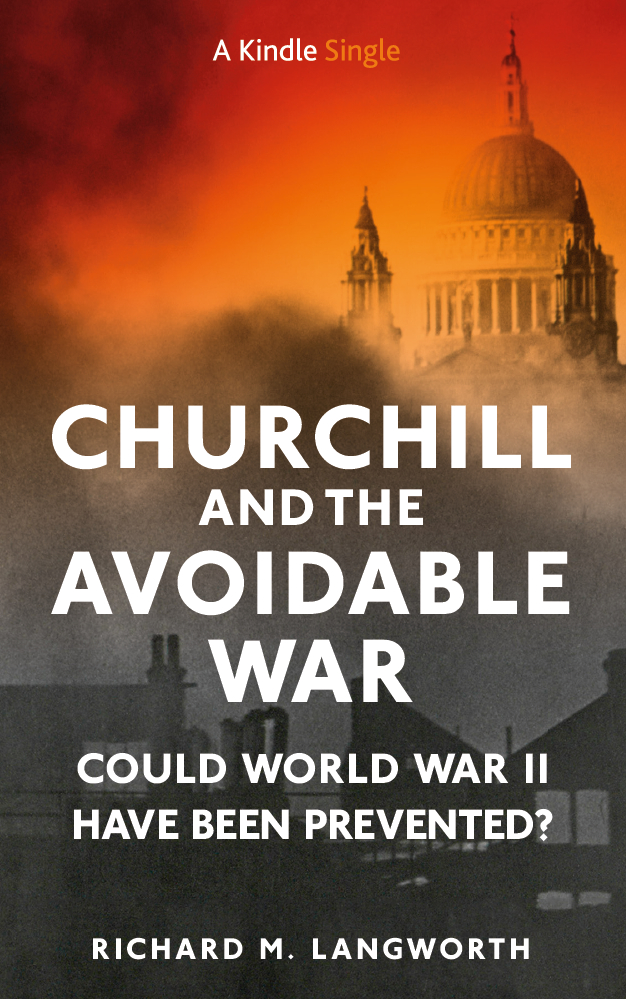
Churchilliana: Return to Glory for an Icon or Two (Update)
Icon of war: the old War Office, Whitehall
(Updated from 2016). Home to Secretaries of State for War Lord Haldane, Lord Kitchener, David Lloyd George and Winston Churchill, it was a key venue in two global conflicts. But in 2016 the old War Office building was sold to developers of a five-star hotel and residential apartments. That work is expected to finish in 2022, and residents are being sought.
Built in 1906 for £1.2, million, the Grade II-listed property changed hands for £300 million. The buyers were the Hinduja Group, in partnership with a Obrascon Huarte Lain Desarrollos (OHLD), a Spanish industrial company.
The demise of the old War Office was unavoidable. At 580,000 square feet, it had become a costly white elephant, fiscally unsustainable. Declarations of war are out of fashion. We don’t even have War Ministries or War Departments. Nowadays, their functions are performed by a “nicer icon” like the Ministry of Defence or the Department of Homeland Security. At any rate, the need for a building this big in the 21st century is past. Unless of course all hell breaks loose, in which case it won’t matter.
Preservation, of sorts
Full marks, then, to the British government, which granted a 250-year lease providing that “the heritage and security of the building is well managed.” And to the Hinduja Group, which “reached out” to the past by declaring: “We will make every effort to honour the heritage and restoration of this national monument, elevate its status and reconnect it with the public.” (The building had long been closed to the public.) The company has worked with a team of experts including Historic England and Museum of London Archaeology.
Nowadays, everything is “iconic,” a word greatly abused. Along with “issues” (the Politically Correct substitute for “problems”) and “reaching out,” (which replaces “contacting” in the Age of Niceness). See: “Some Issues with ‘Issues.’” But if anything is iconic, this grand building qualifies.
So does another, not far away, though rather more modest….
Icon of valor: St. George’s RAF Chapel
In 2016 the fate of this monument in Kent was uncertain. The Daily Mail reported:
With its magnificent stained-glass windows, it stands as a fitting memorial to the Battle of Britain pilots who gave their lives to save the nation from Nazi invasion. But the ornately furnished chapel Sir Winston Churchill insisted should remain a “permanent shrine to the glorious Few” may be closed down and boarded up. Defying the wartime leader’s express wishes, defence chiefs have decreed that the £50,000-a-year cost of running St. George’s Chapel of Remembrance is an ‘inappropriate’ use of resources.
The loss of St. George’s Chapel would have been tragic. Biggin Hill is an “icon,” from where the Royal Air Force sallied forth to beat the “Hun raiders” (as Churchill called them) out of the daylight air and to win the Battle of Britain. Fortunately, it was saved by a charity, the Friends of St. George’s RAF Chapel. Working with Bromley Council and the Ministry of Defence, the Friends care for the beautiful building and its Garden of Remembrance. Regular and special services occur, and visitors are most welcome. Services run Sundays at 9:30am. A special service with retiring Archdeacon Paul Wright occurs at 10:30am on November 14th.
The work of the Friends is extraordinary. Aside from services and special events, they offer pickups to residents within five miles of Biggin Hill who cannot get to services themselves. “Members of the Committee also visit, meet and offer support, to our members who are older or infirm, lonely or temporarily incapacitated.” Membership costs only £15 or the equivalent per year. Donations are welcome. Send to FSGC Treasurer, 39 Jail Lane, Biggin Hill, Westerham, Kent TN16 3SE. By email, please contact the secretary, [email protected].
A worthy development
My personal association with Biggin Hill during the Battle of Britain lives in my mind. As a nation we have short memories and it is well that Memorials such as this should bring to our remembrance the cost of victory in the days when one of our fighter pilots had to be worth ten. They died without seeing the reward of their efforts; we live to hold their reward inviolate and unfading. —Winston S. Churchill, quoted on the Chapel website
I wore the uniform when we didn’t often hear “thank-you for your service.” So I suppose we have matured in our appreciation of those who served. Efforts like those of the Friends of St. George’s Chapel are compelling. The fliers of the RAF, who rose to confront a seemingly invincible enemy in 1940, saved Britain, and much else besides. They “held the fort alone,” as Churchill put it—”till those who hitherto had been half blind were half ready.”







